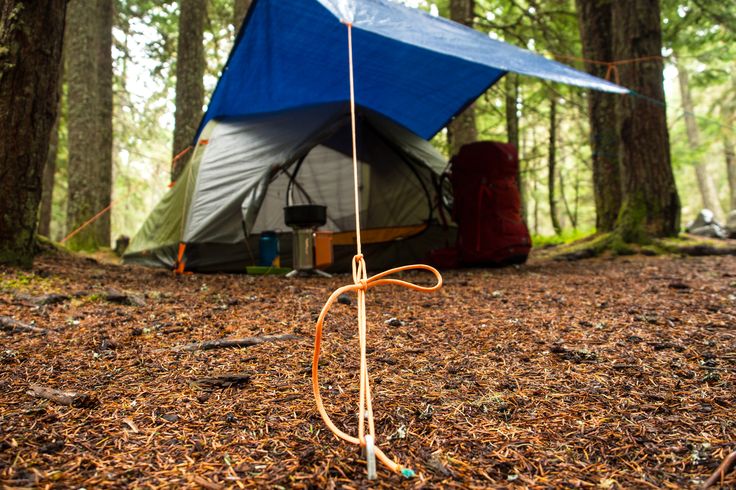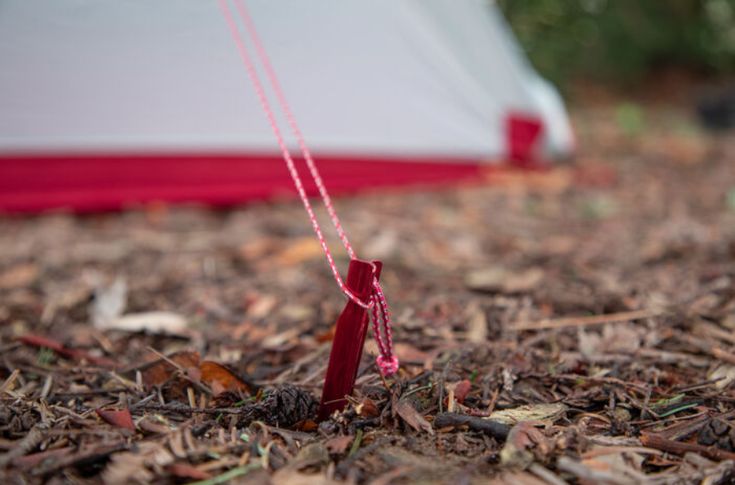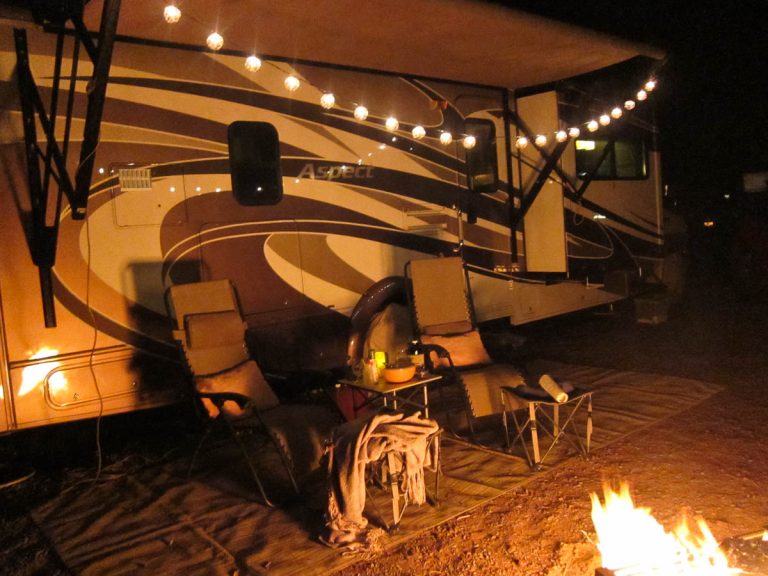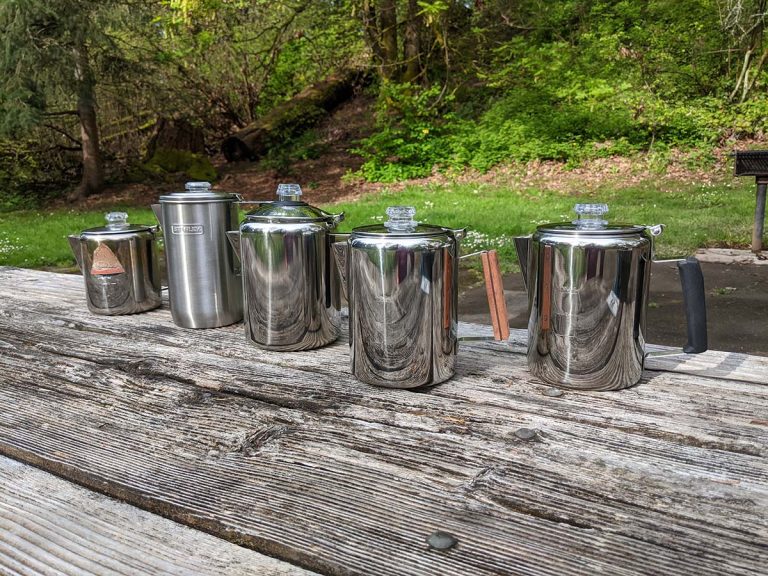How To Use Tent Stakes: Secure Your Tent in Any Terrain
The ability to pitch a tent and utilize tent stakes is a must for every camping trip.
Tent stakes seem to be necessary not just for holding the tent in position while you’re not using it but also for keeping the tent secure while you sleep.
In this article, we’ll talk about everything you need to know, from finding the suitable stake for the task to planting it in the ground correctly. Read on to find out how to use tent stakes the right way!

Table of Contents
How To Use Tent Stakes
As apparent as it might sound, you ought to take better care to set tent stakes in the appropriate spot. If you don’t do this, you may be setting yourself up for a miserable camping trip.
First, choose the prime location. Try to choose a place with a lot of solid ground. When setting up a tent, sand & loose dirt are usually your worst enemies.
A helpful hint is to use your hands to drive in one of the stakes after you’ve found the perfect location. The ground would be too soft if you could accomplish it without any effort. In this case, find another location
Next, you’ll want to prepare to drive the stakes into the ground after you’ve located an appropriate area with thick soil.
One of the things to think about while driving in stakes seems to be the equipment you’ll be using.
To drive the stake into the ground, a rubber mallet will come in handy. At worst, use a flat rock or even a stout branch to do it.
Once you have got this prepared, you need to verify the tent stake angle.
Why is the Tent Stake Angle Important?
Scouts are usually always instructed to place their tent stakes at an angle, with the tip of the stake pointing toward the tent.
This makes good sense, at least in a rational sense. It appears that the stake is pushing back against the strain of the wind that’s tearing the tent apart from it.
Through experience, we can now say that this is not the case. Make sure you constantly drive the pegs in at a vertical angle.
The tent pegs will be considerably more stable if they are driven farther into the earth.
Additionally, when all the pegs are vertical, the tent is being held down equally by each stake regardless of which direction the wind is coming from.
It took us a while to get up to this concept, but once We did, we were committed.
How to Choose Tent stakes
Choosing the right tent stakes can make a big difference in the stability and security of your tent while camping. Here are some factors to consider when choosing tent stakes:
1. Type of Terrain
2. Tent Size and Weight
3. Stake Material
4. Shape & Design
5. Budget
What are the different types of tent stakes
Shepherd’s hook stake
A shepherd’s hook stake is a simple stake with a curved hook at the top, which can be used to hold down the tent’s guylines. This type of stake is best used in soft soil or grassy areas.
Y-shaped stake
A Y-shaped stake has a forked design that allows it to hold more securely in the ground. This type of stake is good for use in moderately soft to hard ground, and is often made from aluminum or steel.
V-shaped stake
A V-shaped stake has a pointed end and is designed to penetrate hard or rocky ground more easily. This type of stake is often made from titanium, which is strong and lightweight.
Spiral stake
A spiral stake has a corkscrew-like design that allows it to twist into the ground more easily. This type of stake is good for use in sandy or loose soil, and is often made from plastic.
Snow stake
A snow stake is designed for use in snow or sand, and is often longer than other types of stakes to accommodate deeper ground penetration. This type of stake is often made from aluminum or steel.
Rock stake
A rock stake is designed to anchor a tent in rocky or hard ground, and often has a wide, flat design that provides more surface area for a secure hold.
How to use Tent Stakes for Muddy Ground
The simplest surfaces to drive a stake into are soft dirt and sand (which we’ll discuss further down). But it also means they have the weakest grip.
If you want to anchor a tent down on the mushy ground, do the following:
- Drive the stake firmly into the soil with your hand. We try to avoid treading on stakes since they may easily be damaged (specifically cheap stakes that usually come with a tent).
- Drive the stake at a right angle to the earth. That is to say, downwards, toward the earth.
- If the tent stake has just one hook, make sure it faces away from your tent.
- Tent stake loops must be completed similarly on the opposite corner.

How to Stake a Tent in Sand
Tent staking on sand is significantly more challenging than tent staking in soft soil. The stakes are simple to drive into the ground, but sand has very little holding ability.
Use either regular tent stakes or sand stakes when pitching a tent in sandy areas or on the beach.
To use regular tent stakes in soft sand, you need first dig down until you reach solid ground, then thread the stake through the tent’s stake loop and hammer it into the earth.
Having additional, long stakes on hand, say, 10 inches or more in length, is useful in this circumstance as well.
If you need a good grip on the sand, utilize sand stakes, which screw well into the earth.
Setting Up a Sand Tent
- A sand stake is inserted through its stake loop and then hand-torn into the sand after the tent is erected.
- Insert the stake at a right angle to the ground, once at a 90-degree angle. What this means is that we are heading down into the earth.
- One-hook tent stakes should be oriented such that the hook faces out from the tent.
- Each tent stake loop requires a similar procedure at the opposite corner.
How to Stake a Tent in Snow

Tent stake-outs in the snow provide their own set of obstacles.
As with anchoring a tent in the sand, your choices expand or contract depending on how far down you can dig.
However, after your tent is up, you may use tent stakes made of galvanized steel to puncture the firm ground if you’re able to dig down far enough in the snow.
Don’t forget to pack a tent stake hammer/mallet to drive those heavy-duty tent stakes further into the ground since you will likely be unable to do it with your bare hands.
If somehow the snow is far too thick to reach the ground, snow stakes will be required. These stakes may be used in hard snow just as they would in soft soil
But if you wish to utilize snow stakes in soft snow, you should:
- The snow stakes need to have holes dug for them.
- Put a small length of guy line through the loop on the tent stake and attach it to the snow stake.
- Just put the stake in the earth where the body used to be (horizontally to its ground).
- Pack as much snow into the hole as possible to seal it.
- Do this again with each tent stake.
How to Stake a Tent on Rocky Ground
Depending on how well your tent pegs work in the rock, setting up your tent on rocky terrain might be a breeze or a nightmare.
Putting Down Tent Stake On Uneven Terrain
- Big rocks should be moved from beneath and around your tent.
- Put a tent stake in the ground in a dead straight line.
- Stop trying to force things if you encounter pushback. You risk losing what you’ve spent on the stake if it is damaged. Take out the stake, nudge it forward, and try again.
- To prevent the guy line from coming loose, ensure the hook on the stoke is facing away from your tent.
How to Remove Tent Stakes

Removing tent stakes can be a bit tricky, especially if the ground is hard or the stakes are firmly stuck. Here are some steps to follow to safely and easily remove tent stakes:
- Loosen the stake: Use a rock or small hammer to gently tap the stake to loosen it from the ground. Avoid hitting the stake too hard, as this can bend or damage it.
- Use a stake puller: If the stake is still difficult to remove, use a stake puller tool, which is designed to grip the stake and remove it from the ground. Slide the stake puller over the stake and apply pressure to lift the stake out of the ground.
- Twist and pull: If you don’t have a stake puller, you can try twisting the stake back and forth to loosen it from the ground. Then, use your hand to grip the top of the stake and pull it straight up and out of the ground.
- Use a carabiner or rope: Another trick to remove stubborn stakes is to tie a rope or carabiner to the top of the stake and pull on it from the opposite direction of the stake. This can help loosen the stake and make it easier to remove.
- Be careful: When removing tent stakes, be careful not to yank them out too quickly or forcefully, as this can damage the stake or bend it out of shape. Take your time and use a steady, gentle pressure to remove the stake from the ground.
Frequently Asked Questions
How do I determine the correct length of tent stakes for my tent?
How do I properly drive tent stakes into the ground?
What should I do if the ground is too hard for tent stakes?
Can tent stakes be reused?
Will the tent get damaged if it is not properly set up in harsh terrains?
What materials are tent stakes typically made of?
Conclusion
Staking down your tent should be a simple process that doesn’t need much time. It’s important to bring the right tent stakes and know what to expect from the terrain you’ll be camping on. And that’s why you need to be well-versed in how to use tent stakes.
Camping may be challenging, so it’s best to be ready for it with a backup plan in case the stakes don’t hold, or you need additional stability due to the wind.

Meet Sarah, a passionate traveler and camping enthusiast who loves to explore the great outdoors. With years of exploring, she has become an expert in testing and reviewing the best tents on the market which got her to start mytravelingtents.com. Her insightful reviews provide valuable information to fellow adventurers looking for the perfect tent for their next camping trip.






